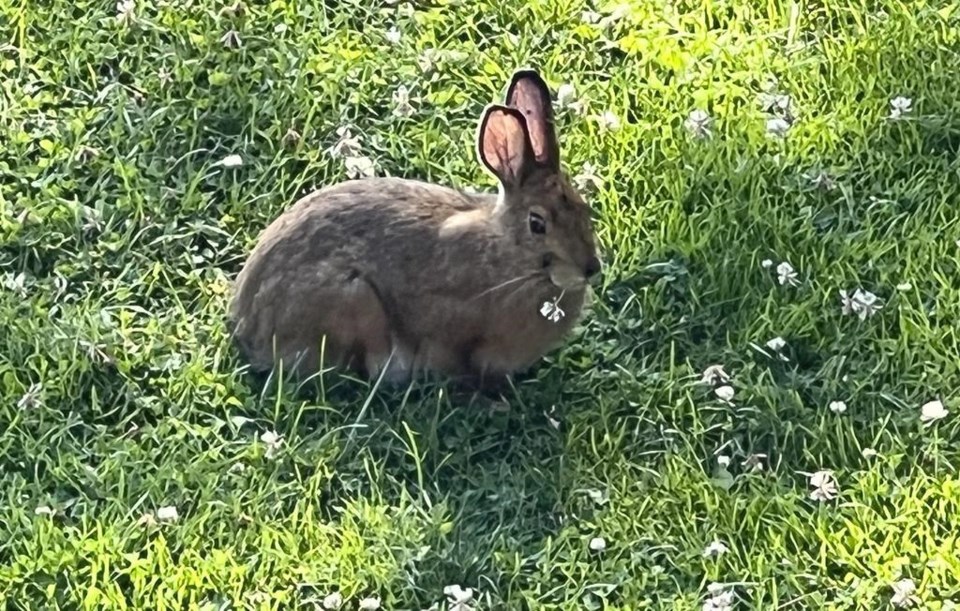Nature is a beautiful thing, but sometimes it can wreak havoc on a garden. Insects and wildlife have to eat, of course, and when we lay out a veritable buffet, who can blame them for gorging themselves?
This is the natural order of things, and we should be happy to see monarch butterfly caterpillars munching milkweed leaves, or birds feasting on dogwood berries in our yards. But other critters can annihilate plants that we’re not willing to share, like food crops, prized blossoms, expensive trees and shrubs, or even the lawn.
The first step to protecting your plants is to identify the culprit.
RABBITS
Rabbit damage results in clean cuts of stems, branches, flowers and foliage near ground level (except in winter, when snow mounds provide elevation; if the damage goes unnoticed until spring, it could be more than 3 feet high).
Rabbits also gnaw bark at the bottom of tree trunks, especially over winter in cold areas, and can decimate a vegetable patch quicker than you can say, “What’s up, Doc?” Then they pay for their meals by leaving “gifts” of round, dull brown, pea-size pellets behind.
Applications of commercial repellents or blood meal, bone meal or cayenne pepper offer some benefit but need to be reapplied frequently, especially after rainfall. The most effective deterrent is a 30- to 36-inch chicken-wire fence with mesh openings smaller than 1 inch. Because rabbits like to dig, install the bottom of the fence 8 inches deep into the soil.
DEER
Deer, on the other hand, tear at plant material, which results in uneven, jagged damage to leaves. Their height also means they can destroy plants and trees as high as 6 feet off the ground. Deer droppings are oblong, shiny and darker than rabbits’.
Deer repellents work somewhat, but constant reapplication to large trees and shrubs can make them cost-prohibitive, especially on large properties in areas with large deer populations. As with rabbits, fencing is the only surefire solution.
But not any fence will do. Deer can jump as high as 6 feet, so you’ll need to install either a single 8-foot barrier, a 6-foot fence outwardly angled at 45 degrees, or two fences 3 feet tall and 4 feet apart (deer won’t be able to scale both).
You also might consider planting deer-resistant plants, but keep in mind that a hungry deer will eat anything, so no plant can be considered deer-proof.
MOLES AND VOLES
Moles and voles are often confused with one another, but they are very different animals.
Think of the “M” in Moles as standing for Meat-eaters. These insectivores mainly eat worms, grubs and other insects.
Their tunneling results in cone-shaped mounds of soil above ground. Although you might think moles are killing your lawn, they are not. They are present in a lawn only because the soil beneath it contains food. If your lawn also contains dead or thinning patches of grass, that’s due to grubs, not moles.
Moles are solitary creatures that spend most of their lives underground, out of sight. Typically, only two to three moles inhabit one square acre of land.
“V” is for Voles and for Vegetarian. You may know them as meadow mice, ground moles or field mice. These rodents feed on plant roots, grasses, seeds, spring bulbs, root vegetables, and the bottoms of trees and shrubs.
Voles multiply like rabbits, producing five to 10 litters of three to six young per year, and they create golf ball-size holes in the soil that lead to long, narrow tunnels.
They also tend to infest cluttered properties. Discourage voles by eliminating plant and other debris, which provide them with food and shelter.
—-
Jessica Damiano writes the award-winning Weekly Dirt Newsletter and regular gardening columns for The AP. Sign up here to get weekly gardening tips and advice delivered to your inbox.
—-
For more AP gardening stories, go to https://apnews.com/search?q=gardening#nt=navsearch
Jessica Damiano, The Associated Press




.jpg;w=120;h=80;mode=crop)